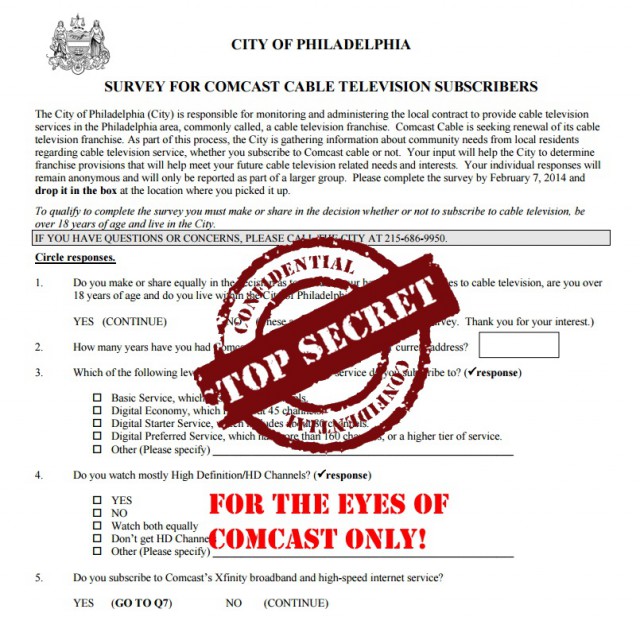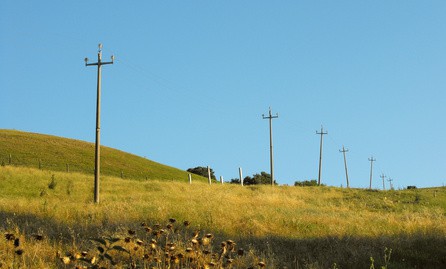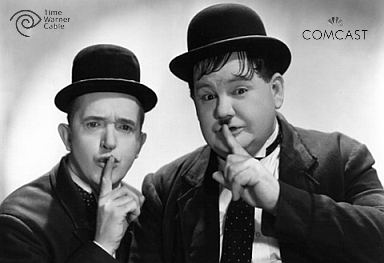 Philadelphia Mayor Michael Nutter has gone all out for Comcast, headquartered in the city he oversees. Not only has Nutter organized 51 mayors to sign a joint letter supporting Comcast’s $45 billion bid to take control of Time Warner Cable, he is also helping protect the cable company from embarrassing revelations about its performance in the city.
Philadelphia Mayor Michael Nutter has gone all out for Comcast, headquartered in the city he oversees. Not only has Nutter organized 51 mayors to sign a joint letter supporting Comcast’s $45 billion bid to take control of Time Warner Cable, he is also helping protect the cable company from embarrassing revelations about its performance in the city.
Philadelphia media and public interest groups are now increasing pressure on the mayor’s office to publicly release the results of an important survey the city conducted as part of its franchise renewal process. Almost two years ago, a random sample of 800 area Comcast customers and non-customers were surveyed by the city to get feedback about Comcast’s performance.
Suspiciously, the full results of the taxpayer-funded survey have been withheld from the public, although the city handed a complete copy of their findings to Comcast so the company can prepare to defend itself.
Once every 15 years Comcast must ask city officials for permission to continue providing cable television service. If the majority of residents surveyed excoriate the cable company and beg the city to grant the franchise to someone else, that could prove a serious embarrassment to Mayor Nutter’s campaign to promote Comcast’s merger with Time Warner Cable.
“We cannot be on hold any longer,” said councilman Bobby Henon, a Northeast Philadelphia Democrat. “We’re cutting short the time to publicly talk about the needs” before the franchises expire later this year, reports the Inquirer.
While the mayor’s office has had no trouble sharing everything they can with Comcast, other groups entitled to the information have only gotten scraps of it or denied access altogether.
The Consumerist found, for example, Philadelphia Community Access Media, responsible for public access programming in the city, has only been shown survey responses directly related to its operations.
Other groups, including West Philadelphia’s Media Mobilizing Project, have been shut out completely and refused access to the survey results or the franchise needs assessment.
 The mayor’s office has remained elusive explaining why a survey conducted using taxpayer dollars has been kept away from taxpayers.
The mayor’s office has remained elusive explaining why a survey conducted using taxpayer dollars has been kept away from taxpayers.


 Subscribe
Subscribe In a major victory for consumers and public interest groups, the Federal Communications Commission this week will unveil fundamental changes in the oversight of high-speed Internet service, regulating it in the public interest as a public utility.
In a major victory for consumers and public interest groups, the Federal Communications Commission this week will unveil fundamental changes in the oversight of high-speed Internet service, regulating it in the public interest as a public utility.
 Time Warner Cable has appealed to the Secretary of the New York Department of Public Service to keep information about taxpayer-subsidized broadband expansion projects in New York a secret.
Time Warner Cable has appealed to the Secretary of the New York Department of Public Service to keep information about taxpayer-subsidized broadband expansion projects in New York a secret. Prestemon rejected efforts by Time Warner Cable to maintain confidentiality even after news of one broadband expansion project was reported by Albany-area media outlets. Prestemon added that public regulatory filings submitted by the company as a project commences effectively places information about it in the public domain.
Prestemon rejected efforts by Time Warner Cable to maintain confidentiality even after news of one broadband expansion project was reported by Albany-area media outlets. Prestemon added that public regulatory filings submitted by the company as a project commences effectively places information about it in the public domain.